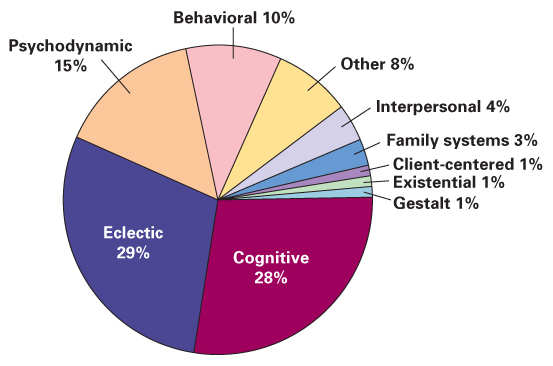
Figure 17.2: Theoretical orientations of a sample of psychotherapists Although there may be as many as 400 different kinds of psychotherapies, most therapists follow one of the orientations in this figure. As you can see, most therapists today consider themselves to be “eclectic” (29 percent) or cognitive (28 percent), with many fewer classifying themselves as “client-centered” or “existential” (the humanistic therapies). Note the “psychodynamic” category includes those who labeled their practice as psychodynamic or psychoanalytic.
(Based on data from Prochaska & Norcross, 2010; and Sharf, 2012; adapted from Comer, 2013b, p. 401.)